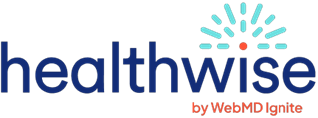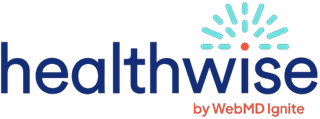Heart Attack and Stroke in Women: Reducing Your Risk
What causes heart disease in women?
Hardening of the arteries, or atherosclerosis, can cause coronary artery disease and heart attacks in both men and women.
Atherosclerosis causes fatty deposits called plaque (say "plak") to build up inside coronary arteries. These arteries provide blood and oxygen to the heart muscle. In most people, this plaque builds up so much that it can narrow the arteries and limit blood flow. Limited blood flow can cause angina symptoms, such as chest pain or pressure. A heart attack occurs when not enough blood and oxygen reach the heart muscle.
But for some women, the way that coronary artery disease and heart attacks happen seems to be a little different. For example, women are more likely to have:
- Non-obstructive coronary artery disease. In many women, plaque does not build up so much that it narrows arteries and blocks (obstructs) the blood flow. This is often called non-obstructive coronary artery disease. It can still cause symptoms, such as chest pain or pressure, and lead to a heart attack.
- Microvascular coronary disease. With this disease, tiny blood vessels of the heart are damaged. These blood vessels carry blood from the coronary arteries into the heart muscle. If they suddenly contract, or spasm, the heart muscle gets less blood and oxygen. This can cause angina symptoms, like chest pain or pressure, and even a heart attack.
- Less common causes of heart attacks. In most people, a heart attack happens when a plaque breaks open and a blood clot blocks blood flow in a coronary artery. But women are more likely to have heart attacks that are caused by other things. For example, a spasm in a coronary artery can block blood flow and cause a heart attack. Or a sudden tear in a coronary artery, called a spontaneous coronary artery dissection (SCAD), can cause a heart attack.
What increases a woman's risk for heart attack and stroke?
Most of the risk factors for coronary artery disease, heart attack, and stroke are the same for women and men. Factors include diabetes, high blood pressure, high cholesterol, obesity, lack of exercise, family history, and smoking, vaping, or using other tobacco or nicotine products.
But women have certain other things that might raise their risk. These include:
- Menopause. A woman's risk of coronary artery disease and stroke is higher after menopause. This higher chance is not completely understood. But cholesterol, high blood pressure, and fat around the abdomen—all things that raise the risk for coronary artery disease and stroke—also increase around this time.
- Hormone therapy (HT) for menopause. If you have menopausal symptoms such as hot flashes and vaginal dryness, you might consider hormone therapy to relieve your symptoms. Because menopause and hormones are linked with the health of your blood vessels, you and your doctor will discuss your health and your risk of coronary artery disease and stroke to make a decision about hormone therapy for menopause.
- Combined hormonal birth control options. These options include birth control pills, skin patch, or vaginal ring. They might increase your risk if you smoke and are older than 35, you have risk factors for atherosclerosis, or you have a blood-clotting disorder. Healthy, young, nonsmoking women may have a lower risk of coronary artery disease and stroke when they use these birth control options.
- Pregnancy-related problems. Problems during pregnancy have been linked to a higher risk of coronary artery disease and stroke later in life. These problems include gestational diabetes and preeclampsia. Experts are studying whether other pregnancy-related problems are linked to heart disease. Tell your doctor about any problems you had during pregnancy.
- Immune diseases. Some immune-related diseases have been linked with a higher risk of coronary artery disease in women. These diseases include lupus and rheumatoid arthritis.
- Migraine headaches. Migraine headaches, especially migraines with aura, have been linked with stroke in women younger than 55.
- Estrogen and anti-androgen gender-affirming hormone therapy. Estrogen and anti-androgen gender-affirming hormone therapy has been linked with coronary artery disease.
- Breast cancer. Women who've had breast cancer have a higher risk of coronary artery disease. It's not clear if the cancer or the cancer treatment, such as chemotherapy and radiation, or a combination of both raises this risk.
What's your risk for heart attack and stroke?
Your doctor looks at things that put you at risk for a heart attack and stroke. The doctor might look at many things, such as:
- Your cholesterol levels.
- Your blood pressure.
- Your age.
- Your ancestry.
- Your sex.
- Whether or not you smoke, vape, or use other tobacco or nicotine products.
Your doctor might use a tool to calculate a risk score for you. There are different tools that doctors use. These may show that your risk is higher or lower than it really is. But the tools give you and your doctor a good idea about your risk.
How can you reduce your risk?
You can use healthy lifestyle changes and medicines to reduce your risk of coronary artery disease, heart attack, and stroke. You can also think about the risks and benefits of hormonal birth control options and hormone therapy for menopause when you are deciding whether to use them.
Heart-healthy lifestyle
A heart-healthy lifestyle can help reduce your risk of coronary artery disease, heart attack, and stroke. And it can help you manage other problems that raise your risk. These problems include high blood pressure, high cholesterol, and diabetes.
Heart-healthy habits include eating heart-healthy foods, exercising regularly, staying at a weight that's healthy for you, and not smoking, vaping, or using other tobacco or nicotine products.
Medicines
You might take medicines, along with making healthy lifestyle changes, to lower your risk. These may include:
- Medicines to treat other conditions, such as diabetes, high blood pressure, or high cholesterol.
- Aspirin. If you're at high risk of a heart attack or stroke and you're at low risk of bleeding, your doctor might talk to you about taking an aspirin every day to lower your risk. Don't start taking daily aspirin without talking to your doctor first.
Birth control and hormone therapy for menopause
Talk with your doctor about what type of birth control is right for you. Healthy, young, nonsmoking women may have a lower risk of heart attack and stroke when they use hormonal birth control options. But these options might increase your risk if you smoke and are older than 35, you have risk factors for atherosclerosis, or you have a blood-clotting disorder.
Work with your doctor to decide whether you want to use hormone therapy to relieve symptoms of menopause. You and your doctor can talk about your health, your preferences, and your risk of heart attack and stroke.
What are the symptoms of a heart attack in women?
Women may feel signs of a coming heart attack days or weeks before it happens. These signs include:
- Shortness of breath.
- Some pain in the chest, arm, or jaw.
- Feeling more tired than usual.
When a heart attack happens, symptoms may include:
- Chest pain or pressure, or a strange feeling in the chest.
- Shortness of breath.
- Lightheadedness or sudden weakness.
- Sweating.
- Nausea or vomiting.
- A fast or irregular heartbeat.
- Pain, pressure, or a strange feeling in the back, neck, jaw, or upper belly or in one or both shoulders or arms.
The pain may feel like pressure, heaviness, weight, tightness, discomfort, burning, or a dull ache. The exact location of the pain is often difficult to point out. It usually begins at a low level, then gradually increases over several minutes.
Women's symptoms are similar to those in men. The most common symptom is chest pain or pressure.
When should you call for help?
Do not wait if you think you are having a heart attack. Getting help fast can save your life. Even if you're not sure it's a heart attack, have it checked out.
Call 911 or other emergency services immediately if you have symptoms of a heart attack. These may include:
- Chest pain or pressure, or a strange feeling in the chest.
- Sweating.
- Shortness of breath.
- Nausea or vomiting.
- Pain, pressure, or a strange feeling in the back, neck, jaw, or upper belly, or in one or both shoulders or arms.
- Lightheadedness or sudden weakness.
- A fast or irregular heartbeat.
Nitroglycerin. If you typically use nitroglycerin to relieve angina and if one dose of nitroglycerin has not relieved your symptoms within 5 minutes, call 911. Do not wait to call for help.
Symptoms can vary. The most common symptom is chest pain or pressure. But women are somewhat more likely than men to have other symptoms like shortness of breath, nausea, and back or jaw pain.
After you call 911, the operator may tell you to chew 1 adult-strength or 2 to 4 low-dose aspirin. Wait for an ambulance. Do not try to drive yourself.
Why wait for an ambulance?
By calling 911 and taking an ambulance to the hospital, you may be able to start treatment before you get to the hospital. If any complications occur along the way, ambulance staff are trained to evaluate and treat them.
If an ambulance is not readily available, have someone else drive you to the emergency room. Do not drive yourself to the hospital.
CPR
If you see someone pass out, call 911 or other emergency services and start CPR (cardiopulmonary resuscitation). The emergency operator can coach you on how to perform CPR.
Related Information
Credits
Current as of: October 2, 2025
Author: Ignite Healthwise, LLC Staff
Clinical Review Board
All Ignite Healthwise, LLC education is reviewed by a team that includes physicians, nurses, advanced practitioners, registered dieticians, and other healthcare professionals.
Current as of: October 2, 2025
Author: Ignite Healthwise, LLC Staff
Clinical Review Board
All Ignite Healthwise, LLC education is reviewed by a team that includes physicians, nurses, advanced practitioners, registered dieticians, and other healthcare professionals.




